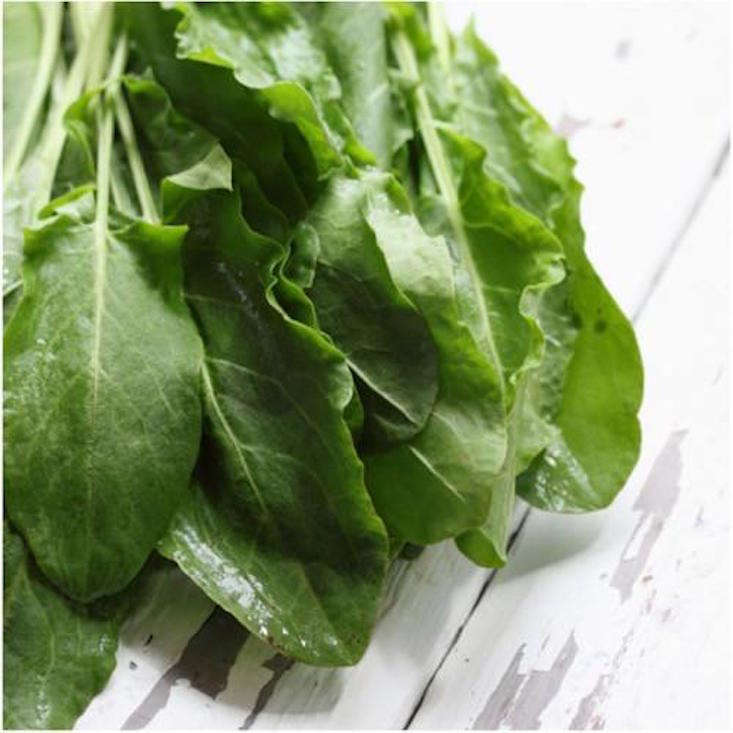Sorrel, Rumex: “Sour Lettuce”
Please don’t be intimidated by the fact that “sorrel” derives from the French word for “sour.” I have picky kids in my Garden Club routinely begging to eat sorrel; I think that says something. Sorrel is an herb that is easy to grow, produces for multiple seasons, and comes back yearly.
Please read on to be properly introduced to sorrel.

Sorrel leaves, generally speaking, are bright green, spinach-like, and pointed like an arrow. The taste, admittedly, is sour at first but there is also a lemony tang that comes forward and makes it surprisingly refreshing.
During the Middle Ages, before citrus fruit entered Europe, people cooked with sorrel to lend a tart flavor. After citrus fruits became popular, sorrel basically became a memory. Eventually it made a slight comeback and today this herb is widely used in French cooking, in sauces and soups.

The reason for sorrel’s zippiness is because of its high level of oxalic acid (similar to spinach). Older leaves have more of this acid present; it’s better to cook larger leaves than to eat them raw. Sorrel is also high in vitamin C, which once made it a popular preventative measure for scurvy (and now considered a useful antioxidant).

A 4-inch pot of Red Veined Dock (as shown above) is $6.95 from Annie’s Annuals.
Cheat Sheet
- From early spring to late fall, sorrel leaves grow quickly from the center to make a clump 2 feet high and wide, making it a long-blooming green.
- If left to flower and go to seed, sorrel will re-seed itself around your garden beds. You can divide healthy-looking clumps and either re-plant them or give them to friends.
- When thinking of eating sorrel, go by this simplified rule: short leaves, eat raw. Large leaves, eat cooked. Also, if you don’t have a lemon to make a salad dressing, use sorrel to add tang.

Keep It Alive
- In the spring after the soil has warmed, you can sow sorrel seeds. (I, however, like to buy 4-inch starts from the nursery.)
- Sorrel requires little babysitting, other than harvesting and removing any slug-damaged leaves. In July, when temperatures rise, sorrel may bolt; trim off the tall flower stalks to encourage more leaf production.
- Prefers full sun, but I have successfully grown sorrel in part sun. Also appreciates moist, fertile soil.
N.B.: For more edible gardening ideas, see:
- Edibles: A Field Guide.
- 23 and Me: My Favorite Edible Plants for Shade.
- Hardscaping 101: Design Guide for Edible Gardens.
- Small Space Gardening: The Postage Stamp Vegetable Garden.














Have a Question or Comment About This Post?
Join the conversation (2)